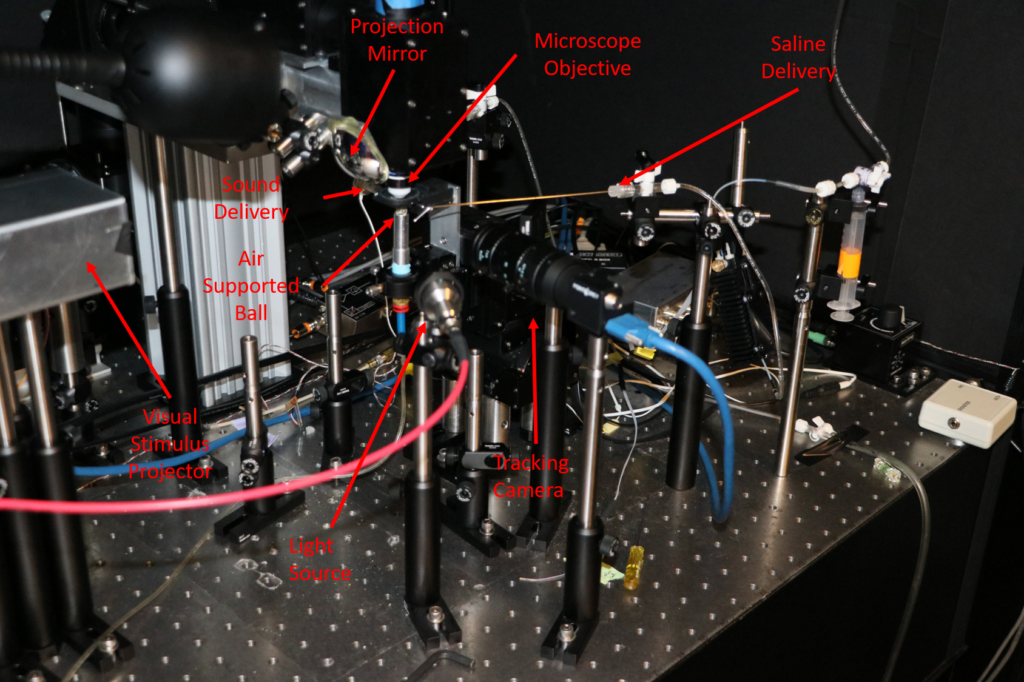I started working as a research software engineer for the Princeton Neuroscience Institute (PNI) in May 2017. At the end of my first week I received an email from Professor Mala Murthy and post-doc David Deutsch of the MurthyLab, asking if I would be interested in working on a project involving a “virtual reality environment for neural recording experiments”. The kid in me got very excited at the prospect of making video games. At the time I did not know the project was to develop a virtual reality simulation for flies!

Virtual reality experiments have a long history in neuroscience . They allow researchers to restrict the movement of animal subjects so that they can use advanced microscopy to image their brains in “naturalistic” environments. In the Murthy lab’s VR setup, the fly is fixed to the objective of a two photon microscope and suspended above a small sphere floating on a column of air. This small sphere is used as a sort of omni-directional treadmill. While the fly cannot actually move, it can move its legs, which in turn move the freely rotating sphere. The movement of the sphere is tracked with computer vision algorithms and thus a fictive path for the fly in a virtual world can be reconstructed. This setup allows a “moving” fly’s brain to be imaged with techniques that require it to be stationary. The two photon imaging system then provides a very flexible and powerful tool for studying changes in the fly’s brain activity over time of the experiment. Different spatial and temporal resolutions are available depending on the needs of the experimenter.
Continue reading